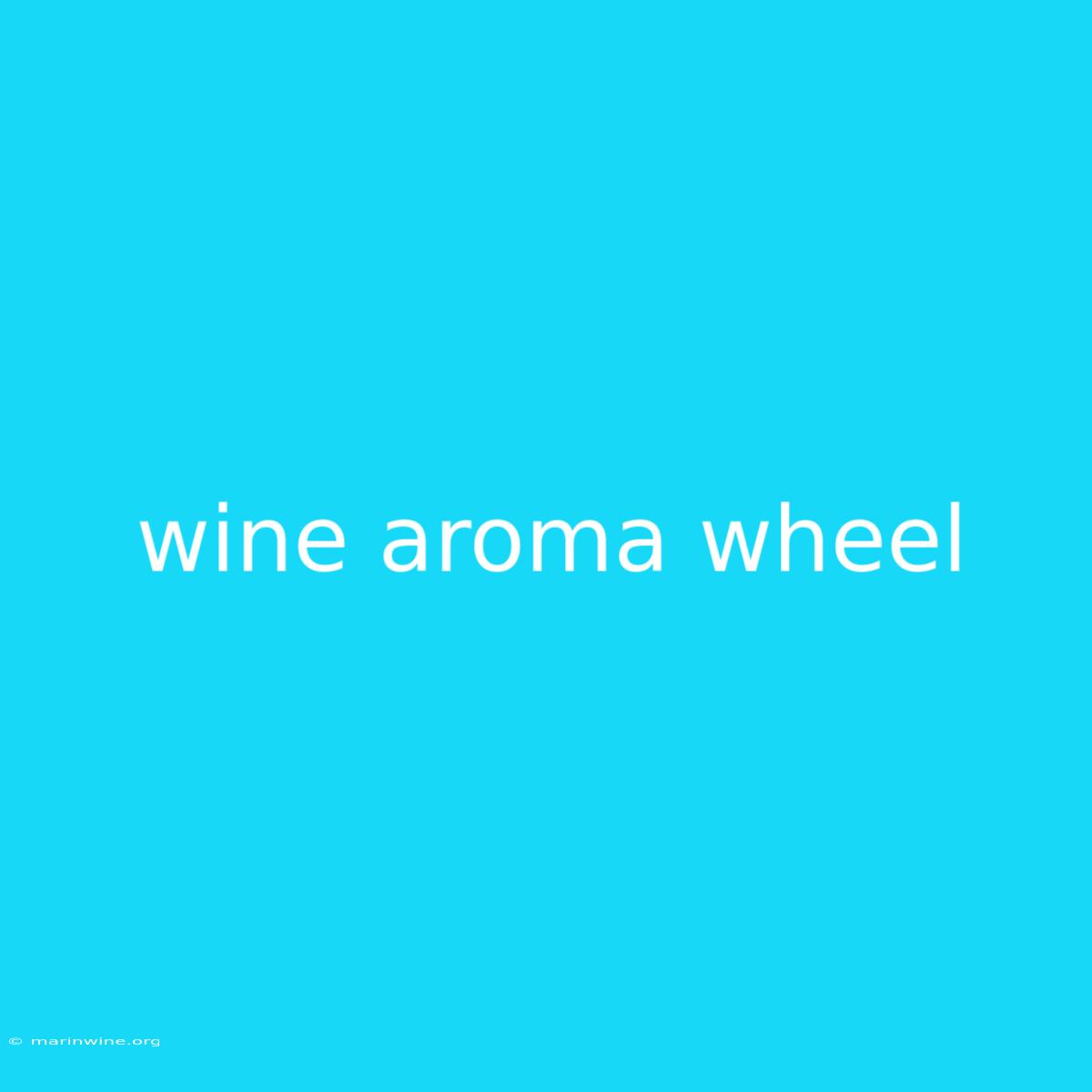Unlocking the Secrets of Wine: A Journey Through the Aroma Wheel
Have you ever wondered how wine experts can identify so many different aromas in a single glass? It's not magic, but rather a systematic approach using a tool called the wine aroma wheel. This guide will delve into the fascinating world of wine aromas, revealing the secrets behind this indispensable tool.
Why It Matters: The wine aroma wheel is a powerful tool for both novice and experienced wine drinkers. It provides a structured framework to identify and understand the complex olfactory experiences within a wine. Whether you're trying to impress at a wine tasting or simply want to deepen your appreciation for the beverage, exploring the aroma wheel is a rewarding journey.
Key Takeaways of Wine Aroma Wheel
| Key Takeaway | Explanation |
|---|---|
| A Visual Guide to Wine Aromas | The wheel organizes aromas into distinct categories, making it easier to identify and describe the scents in a wine. |
| Essential Tool for Wine Professionals | Sommeliers, winemakers, and critics rely heavily on the aroma wheel to assess the quality and characteristics of wines. |
| Enhanced Wine Appreciation | By understanding the nuances of aromas, you can better appreciate the complexities and stories hidden within each bottle. |
The Wine Aroma Wheel
The wine aroma wheel was initially developed by the University of California, Davis, in the 1980s and has since become a staple in the wine world. It is a circular diagram with a central hub, branching out into categories and subcategories of aromas. Each category encompasses a range of scents, from the more common fruit and floral notes to more complex aromas like earth, spice, and wood.
Key Aspects of Wine Aroma Wheel
Fruit:
- Introduction: The most common aromas found in wine, often representing the grape variety's primary characteristics.
- Facets:
- Red Fruit: Cherry, raspberry, strawberry, blackberry, plum
- Black Fruit: Cassis, blueberry, black currant, fig
- Tropical Fruit: Mango, papaya, pineapple, guava
- Citrus Fruit: Lemon, grapefruit, orange, lime
- Summary: Fruit aromas are often the most dominant, providing a foundation for the wine's overall profile.
Floral:
- Introduction: Floral notes add delicate and often subtle layers of fragrance to wine, representing the presence of specific flower compounds.
- Facets:
- Roses: Rose petals, violet, lavender
- Other Flowers: Lilac, jasmine, honeysuckle
- Summary: Floral aromas can be subtle but play a significant role in adding complexity and elegance to a wine's bouquet.
Spice:
- Introduction: Spices add warmth and complexity to wine, evoking sensations reminiscent of culinary seasonings.
- Facets:
- Black Pepper: Black peppercorn, white pepper
- Other Spices: Cinnamon, nutmeg, clove, cardamom
- Summary: Spicy aromas enhance the wine's complexity and can add depth to the tasting experience.
Earth & Minerals:
- Introduction: These aromas often reflect the soil conditions and terroir where the grapes are grown.
- Facets:
- Earth: Mushroom, truffle, wet soil
- Minerals: Slate, flint, graphite
- Summary: Earth and mineral notes contribute to a wine's character and can add a unique dimension to its aroma profile.
Oak & Wood:
- Introduction: Oaks used for aging wine impart distinct aromas, creating a subtle interplay between the wine and wood.
- Facets:
- Vanilla: Vanilla bean, caramel, toast
- Cedar: Cedarwood, pencil shavings
- Smoky: Smoke, campfire, leather
- Summary: Wood-derived aromas provide a complex interplay of flavors and can create a unique and memorable sensory experience.
FAQ: Wine Aroma Wheel
Q: How do I use the wine aroma wheel? A: Start with the central hub and gradually explore the branches. Identify the dominant aroma categories, then narrow down to specific aromas.
Q: Is the aroma wheel a definitive guide? A: The wheel serves as a valuable starting point but remember that aromas can vary widely depending on the grape variety, winemaking techniques, and aging process.
Q: Can I use the aroma wheel for any wine? A: The wheel is applicable to most wines, but it is particularly helpful for wines that have been aged in oak barrels.
Q: Can I improve my ability to detect aromas in wine? **A: ** Practice makes perfect. Regularly engaging with the aroma wheel and focusing on aroma identification can enhance your olfactory perception.
Tips for Using the Wine Aroma Wheel
- Start by taking a deep inhale. Focus on the initial impression and note the dominant aromas.
- Consider the wine's color, intensity, and clarity. These factors can provide clues about the potential aromas present.
- Take time to reflect. Think about the aromas you are experiencing and their associations.
- Use the wheel as a guide. Don't be afraid to experiment and explore different sections of the wheel.
- Practice, practice, practice. The more you use the aroma wheel, the better you will become at identifying and describing aromas in wine.
Summary by Wine Aroma Wheel
Exploring the wine aroma wheel is a rewarding journey of sensory discovery. This tool offers a structured framework to understand the complexity of aromas in wine, enhancing your appreciation for the nuances and stories hidden within each bottle. From the primary fruit aromas to the more subtle earth and spice notes, the wheel provides a comprehensive guide for navigating the captivating world of wine aromas.
Closing Message: Embrace the adventure of uncovering the captivating aromas within your next glass of wine. Let the aroma wheel be your guide, and enjoy the enriching journey of discovering the hidden olfactory treasures within each bottle.

